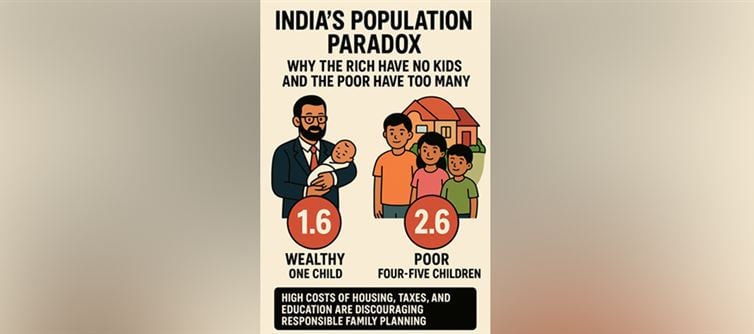
India’s fertility story isn’t just about numbers; it’s about imbalance. The wealthy, educated, tax-paying class is shrinking its families, while those living off subsidies are multiplying. The result? A looming demographic crisis that could reshape the economy and society. Let’s break it down:
1. The Fertility Freefall 📉
India’s Total Fertility Rate (TFR) is now 1.9, below the replacement rate of 2.1. That means fewer young taxpayers tomorrow to support a rapidly aging population.
2. The Wealthy One-Child Club 🏙️
Among India’s richest and most educated, fertility is just 1.6. High costs of housing, backbreaking taxes, and skyrocketing education fees make having more than one child a “luxury.”
3. Subsidy-Fueled Fertility 💰➡️👶👶👶👶👶
Meanwhile, in the poorest quintile, fertility remains above 2.6. Families dependent on subsidies often have 4–5 children, creating a widening gap between those who contribute and those who rely on welfare.
4. Urban vs Rural Divide 🌆 vs 🌾
In urban india, TFR hovers around 1.6–1.7, but in rural pockets, it remains well above 2. This uneven growth means taxpaying cities are shrinking while welfare-dependent villages expand.
5. The Economic Time Bomb ⏰
Fewer contributors + more dependents = an unsustainable welfare state. Without policy correction, india risks overburdening its shrinking educated class while rewarding irresponsible growth.
👉 Bottom Line:
India doesn’t just need population control—it needs population balance. Policies must incentivize responsible family planning among the poor and make child-rearing affordable for the middle and upper classes. Otherwise, the india of 2050 may be both aging and overcrowded in all the wrong ways.




 click and follow Indiaherald WhatsApp channel
click and follow Indiaherald WhatsApp channel